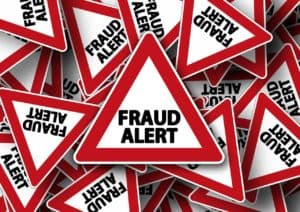
Mortgage fraud is of growing concern within the context of the Australian economy.
UBS, the investment bank, warns that up to a third of Australians are lying on their loan applications. Surveys conducted in 2016 and 2017 confirm this concerning trend. What can lenders do to protect their interests?
What is mortgage fraud?
In its simplest form fraud is a deliberate attempt to deceive by misrepresenting information and facts.
Mortgage fraud takes many forms. It includes:
- borrowers and mortgage brokers deliberately falsifying documents when applying for a loan,
- scams to get funds under false pretences,
- banks and private lenders fudging the numbers in order to push through loans.
Mortgage fraud may include any of the parties involved in the mortgage acquisition process. None are immune – buyers, investors, sellers, property developers, lenders, real estate agents and appraisers.
UBS mortgage fraud surveys
“Liar loans”, a term made popular in the US during the global financial crisis, describes loans pushed through with poor documentation. UBS estimates $500 billion worth of home loans contain lies or misrepresentation about assets, incomes, debts and expenses.
In 2016 the UBS survey included more than 1200 people who had recently taken out a mortgage. 28% admitted their application was not totally factually accurate. The 2017 survey saw an increase in fudging; 33% admitted to lying on their loan application.
In what areas did the applicants lie?
- 30% understated living costs
- 15% understated other debts
- 15% overstated assets
Borrowers appear to firmly believe in house price inflation therefore they don’t see the need to be honest on their mortgage applications. The house will be worth more next year, right? But what if house prices stop rising? Or worse still, what if the housing market collapses?
Analysts warn that banks and lenders are vulnerable to a housing downturn as many borrowers are in a weaker financial position than the banks think.
In addition, UBS warns banks that mortgage fraud could invalidate some of the lenders’ mortgage insurance (LMI). This means lenders and banks could be even more exposed and vulnerable than believed to be.
What can banks and lenders do to reduce their risk?
According to the Australian Securities and Investments Commission (ASIC) there is a need for systemic solutions, not just responding to individual cases. The ASIC suggests a two prong approach:
- reducing the incidence of loan fraud, and
- working with lenders to improve procedures for detecting fraud.
Certain patterns or behaviours correlate with a higher rate of lying. What are the risk indicators?
- There is a correlation between fudging on a loan application and risky credit card behaviour;
- Applications via mortgage brokers have a higher percent of falsifications. UBS identified brokers as a “potential area of weakness”;
- Liars on applications tend to spend all their income and have no savings to act as a buffer in adverse conditions such as ill health or job loss,
- States with the highest home prices have higher rates of lying. New South Wales and Victoria came in first and second respectively.
Conclusion
In order to mitigate loan fraud of this nature it is vital lenders tighten underwriting standards. Also, lenders must diligently check borrowers’ applications.
Finally, as lenders find different approaches to detect fraud, they can share their successes. It is vital to be aware of the warning signs and take the necessary preventative actions.
Related articles
Mortgage Fraud: Dangers Inherent in “All Monies” Clause
Lender’s Mortgage Insurance: Who Does it Protect?
This publication is for your general information and interest only. It is therefore not intended to be comprehensive, and does not constitute and must not be relied on as legal advice. You must seek advice tailored to your specific circumstances.
